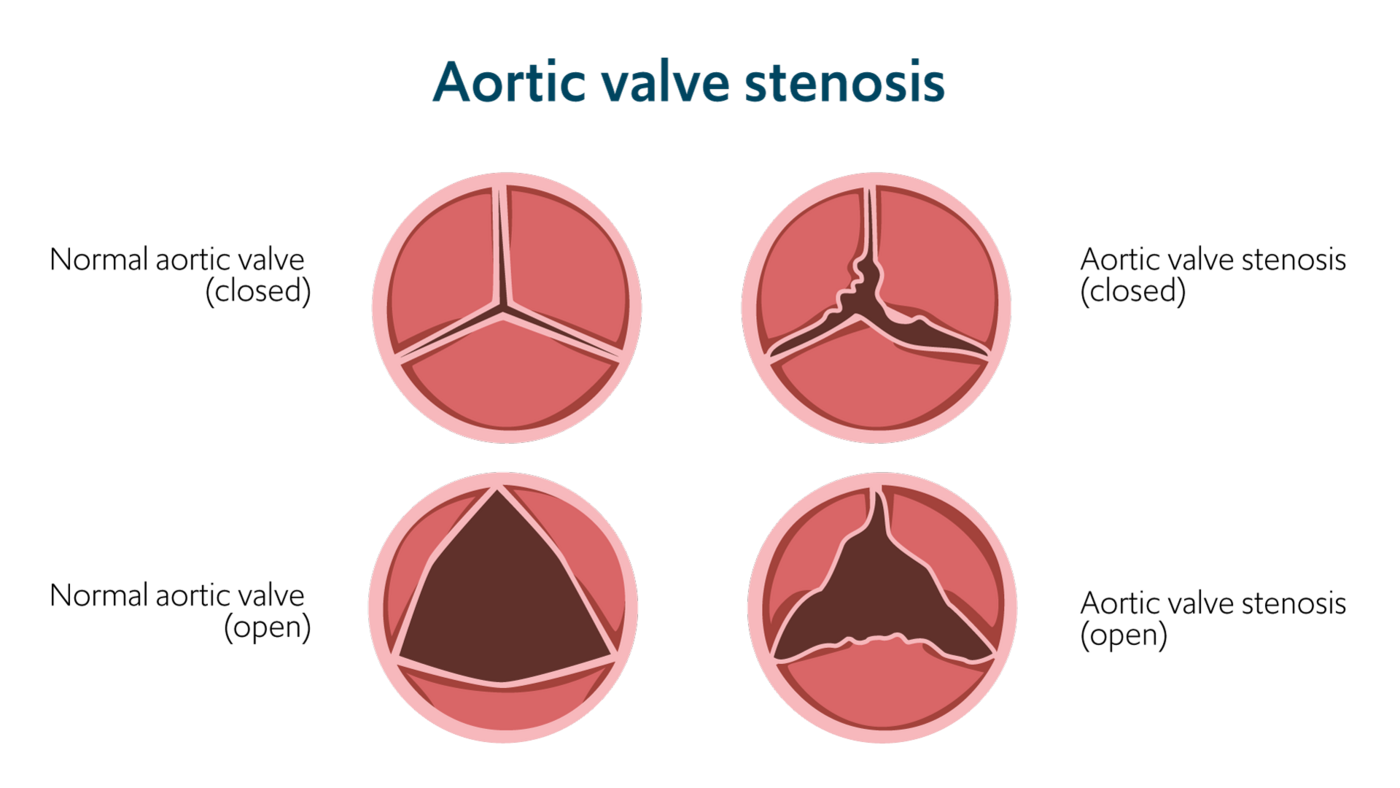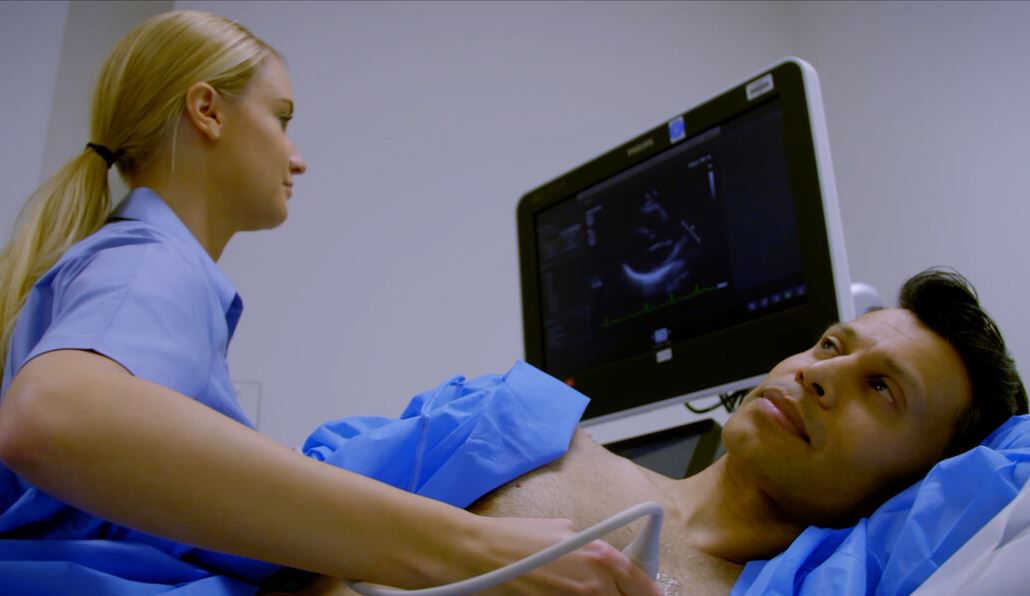What is severe aortic stenosis?
Aortic stenosis is a common heart valve disease in which the aortic valve is narrowed and cannot open fully. In severe aortic stenosis, the thin tissue leaflets that make up the valve become thick and stiff, restricting blood flow from the heart to the rest of the body.
“Severe aortic stenosis is classed as the final stage of aortic stenosis. It can cause symptoms that affect your health, ability to perform daily activities and quality of life,” explains our consultant cardiac surgeon, Mr J. Andreas Hoschtitzky.
By obstructing blood flow out of the heart, aortic stenosis makes the heart work harder to supply the blood and oxygen your body needs. Over time, this increased strain on the heart can cause serious complications such as heart arrhythmias, heart failure and even sudden death if not treated.
It’s worrying to find out that you have a heart valve problem. However, valve surgery can replace your faulty valve, resolve your symptoms and restore your ability to live an active lifestyle.

Aortic valve stenosis causes the valve to become narrowed, reducing blood flow through the heart.
Severe aortic stenosis symptoms
Some people with severe aortic stenosis don’t notice any symptoms. This can be because the symptoms are vague, you attribute them to other health problems, or because other diseases limit your function.
The symptoms of severe aortic stenosis are:
- fatigue and reduced energy levels
- dizziness and fainting
- chest pain or tightness, especially on exertion
- breathlessness that’s worse when exercising or lying flat
- fast, irregular heartbeat
- foot and ankle swelling
- reduced ability to exercise and perform daily activities
- tiredness after activity
- insomnia and sleep disturbance
Investigation of severe aortic stenosis
If you have aortic stenosis, you will need regular reviews and investigations to check whether you need treatment and ensure you get it in time to prevent permanent damage to your heart. Investigations include:
- echocardiogram – an ultrasound of your heart and valves.
- electrocardiogram or ECG – a recording of your heart’s rate, rhythm, and electrical activity
- chest X-ray- shows fluid in the lungs, heart enlargement and calcium build-up in the heart
- CT/MRI scan – advanced images to show the heart structure in more detail
- cardiac catheterisation: Coronary angiography to check the health of your heart and the blood supply to your heart muscles
Echocardiogram in severe aortic stenosis
Echocardiography or ‘echo’ test uses sound waves to visualise your heart. An echo can assess your aortic stenosis severity by evaluating three key measures:
- peak velocity (PVel): The top speed of the blood flowing through the valve. This increases when the valve is narrowed. In severe aortic stenosis, this is above 4 m/sec
- mean pressure gradient (MPG): The difference in blood pressure between the left ventricle and the aorta. This rises with increasing aortic stenosis severity. In severe aortic stenosis, this is above 40mmHg
- aortic valve area (AVA): The aortic valve area decreases with stenosis. In severe aortic stenosis, this is less than 1cm²
For severe diseases, cardiologists also use the echo to measure the calcium score (the amount of calcified plaque) in the valve
Some people may experience symptoms even though their aortic stenosis isn’t measured as severe. A stress echo that looks at the heart’s function during exertion can help assess whether valve replacement surgery is needed in these individuals.

Patient undergoing echocardiogram
Treatment for severe aortic stenosis
“The definitive treatment for severe aortic stenosis is surgery to replace the faulty valve. Medications can reduce some symptoms, but they can’t relieve or reverse the valve damage,” explains Mr Hoschtitzky.
Traditionally, valve replacement has been through open-heart surgery, known as surgical aortic valve replacement or SAVR. However, a new, less invasive procedure called TAVI or transaortic valve implantation can also replace a diseased valve with a new prosthetic device.
Surgical aortic valve replacement (SAVR)
Your cardiothoracic surgeon will perform SAVR under general anaesthetic. They will make a long incision down your breastbone so that they can reach your heart. However, your surgeon may use a smaller, less invasive incision if possible.
They will connect your major blood vessels to a heart-lung bypass machine, which pumps oxygen-rich blood around your body during surgery following which the team will inject medication to stop your heart and clamp the major blood vessel to prevent blood from flowing through the heart and allow your surgeon to operate effectively.
Your surgeon will cut away the damaged aortic valve and stitch the new prosthetic valve in place. The theatre team will then restart your heart and disconnect the bypass machine. Finally, your surgeon will close the wound.
Sutureless aortic valve replacement surgery
We offer sutureless aortic valve replacement, which is a surgical technique for people with aortic stenosis. The procedure allows the surgeon to implant the prosthetic valve more quickly, meaning a shorter cardiopulmonary bypass time and a quicker recovery.
TAVI
TAVI is a minimally-invasive procedure to treat aortic stenosis. The cardiologist or surgeon inserts a new aortic valve through a blood vessel in your groin, left part of the chest chest, or shoulder. They expand the valve with a balloon and place an animal-tissue valve within your existing aortic valve. The new prosthetic device takes over the function of the damaged valve.
“A TAVI procedure is less invasive than open-heart surgery. In the UK, it is mainly used for people who are too elderly, frail or unwell for SAVR. However, NICE (National Institute for Health and Care Excellence) is reviewing its TAVI guidelines,” explains Mr Hoschtitzky.
TAVI offers quicker recovery and shorter hospital stays, so they may recommend the procedure more widely at some time in the next decade or two depending on the evidence that will emerge, including for people at intermediate or low risk for cardiac surgery.
Prognosis of severe aortic stenosis
If you have symptoms of severe aortic stenosis, your prognosis is poor if you don’t have valve replacement surgery. Aortic stenosis is progressive; without treatment, you will experience worsening symptoms, which will eventually cause death.
Once symptoms start, the average survival is 50% at two years and 20% at five years. That may sound bleak, but there is excellent news. Most patients can live a normal life with excellent long-term survival after successful valve replacement surgery, whether by surgery or TAVI.
Get in touch
For more information or to book an appointment, please contact our customer care team.
Related content
-
Aortic stenosis
Aortic stenosis is a disease that affects the main outlet valve of the heart and is the third most common cardiovascular disease.
-
Arrhythmia (abnormal heart rhythm)
Arrhythmia is an abnormal heart rhythm, where the heart’s normal rhythm is disrupted.
-
Heart failure
Heart failure occurs when the heart stops being able to pump blood around the body in an efficient way.
-
Transcatheter aortic valve implantation (TAVI)
TAVI is a minimally invasive procedure where a new aortic valve is inserted into your heart.
-
Heart valve repair or replacement
Heart valve surgery can repair or replace a damaged valve.
